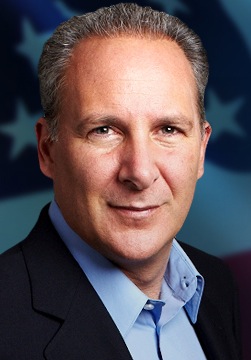More Consumption Less Production
December's larger than expected jump in non-farm payrolls is predictably being touted as evidence of a more vibrant U.S. economy. Unfortunately, the data does not support this conclusion. The bloated service sector added 178,000 jobs, while manufacturing shed another 12,000 jobs. What this means is that 178,000 more workers will be consuming goods while 12,000 fewer will be making them. The result will be larger trade deficits that merely compound already stretched global imbalances and exacerbate America's inevitable day of reckoning.
A service sector can only exist so long as it is supported by a vibrant manufacturing sector. The reason is simple. People employed in the service sector consume goods but do not actually produce any of them. Therefore they must rely on others, who presumably benefit from their services, to produce goods in their stead.
As an example, suppose that ten castaways were marooned on an island. What if on the day they washed up on shore they all decided to assume the following jobs; lawyer, accountant, banker, economist, actor, philosopher, astrologer, beautician, teacher, and nurse. How long do you suppose they would all remain alive without food, water, or shelter? Someone has to provide those things or everyone will perish.
In modern America, the goods shortfall is being made up by foreigner producers, who only derive a marginal benefit from the American service sector. In December, 43,000 new jobs were added in the education and health care sectors and 50,000 were added in business and professional services. What are all of these people going to export in order to pay for all the imported goods their paychecks will permit them to consume? Is there really that big a demand for American legal services in China? Do the Japanese really need our accounting advice? Do Saudi Arabian children benefit from pre-schools in America? How many sick Germans will seek treatment in American hospitals?
The fact that the U.S dollar rose in response to today's jobs data is further evidence of how widespread this misunderstanding has become. Currency traders bid up the dollar because they assume a stronger jobs market will engender higher interest rates, which is perceived as dollar bullish. However, they ignore the longer term implications of the larger trade deficits that those service jobs will ultimately produce, which is decisively dollar bearish.
For now, all these excess dollars are being absorbed by foreign central banks precisely because foreign private consumers have little use for them. Today's jobs data means that the resolve of foreign governments to continue accumulating additional dollar reserves will be that much harder to maintain.
The best strategy for investors is to take advantage of the opportunities short-term speculators create. In other words, buy gold and oil. For the best way to take advantage of the big drop in oil and gas prices, download my must-read, free report on Canadian Energy Trusts here.

















